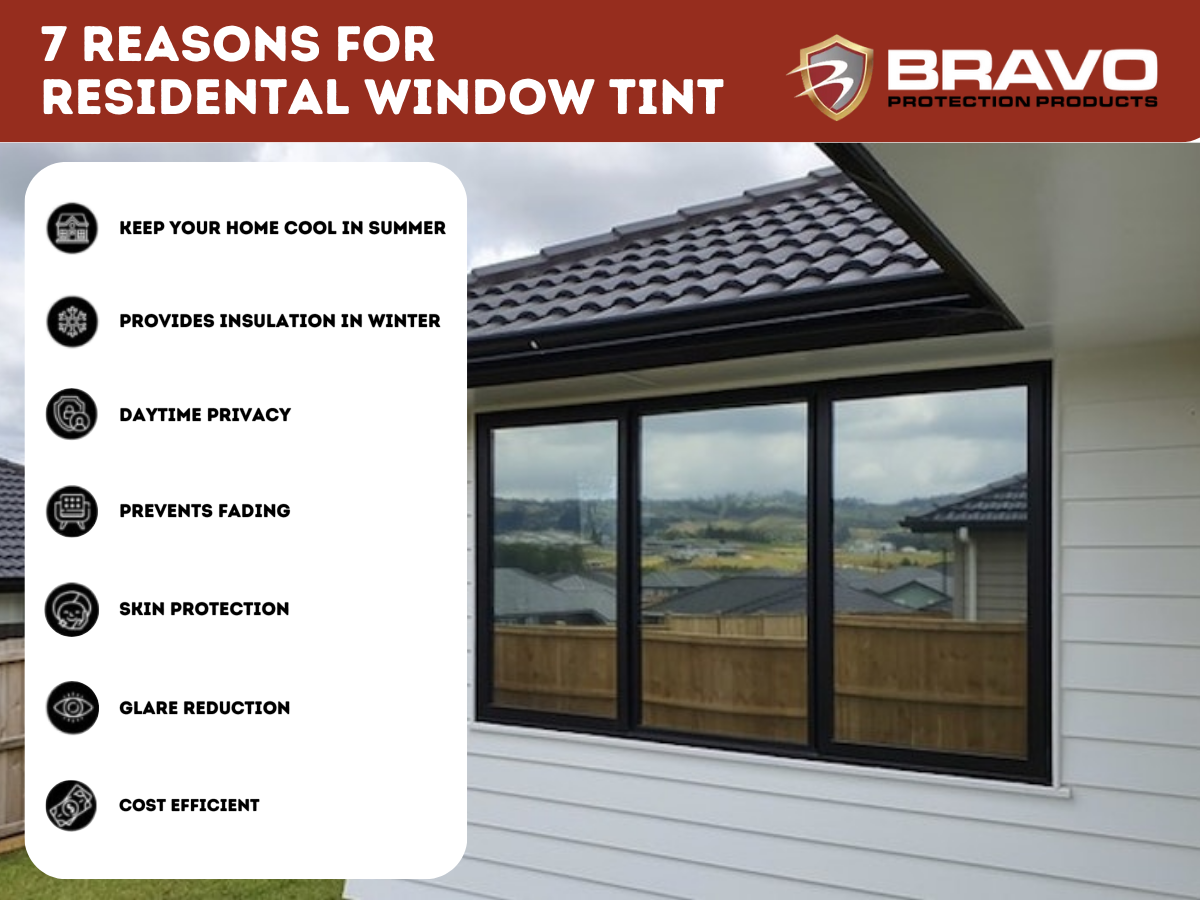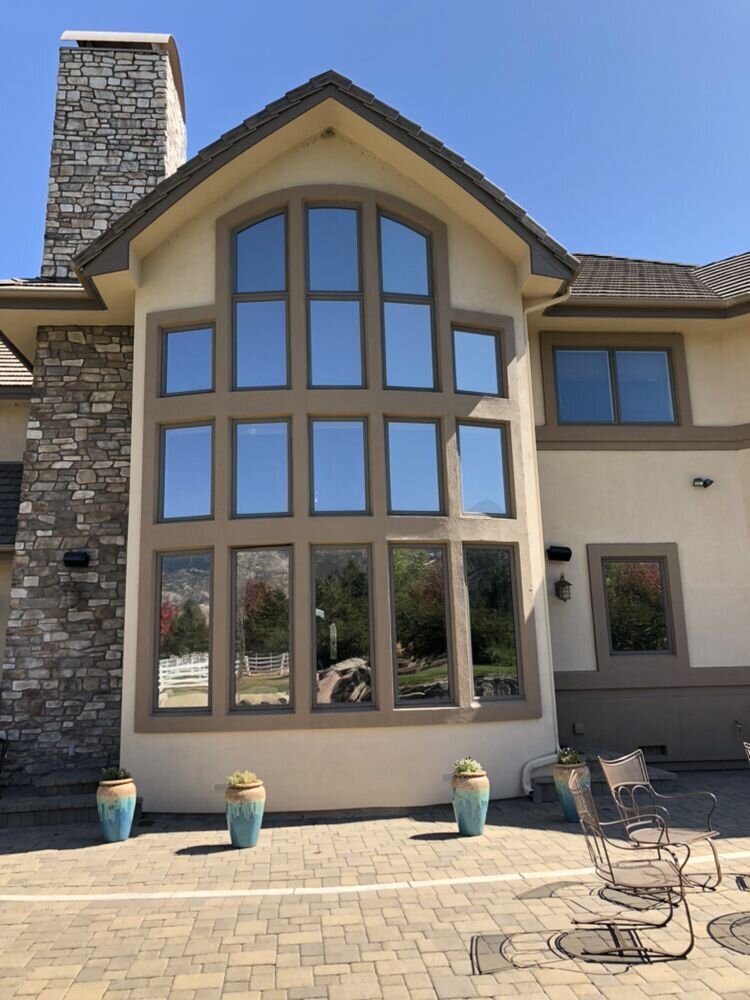How Residential Window Tinting Enhances Your Home's Energy Efficiency
Residential home window tinting offers an engaging solution for homeowners seeking to boost energy efficiency within their living areas. By using specialized movies to windows, it properly minimizes heat transfer, consequently maintaining interior temperatures and lessening the requirement for extreme home heating or air conditioning.
Recognizing Window Tinting
Understanding home window tinting is necessary for house owners looking for to enhance both comfort and power efficiency in their home. Residential Window Tint. Window tinting involves the application of a slim film to the interior or outside surface area of glass windows. This movie can substantially modulate the amount of sunshine and warmth that goes into a home, therefore influencing interior climate problems
There are numerous types of window tinting movies readily available, each with distinct residential or commercial properties. The efficiency of home window tinting is frequently measured by its Visible Light Transmission (VLT) percentage, which shows exactly how much light can pass via the movie.
Benefits of Energy Effectiveness
Home window tinting not just boosts visual appeals however additionally plays a considerable role in boosting energy efficiency within residential rooms. By decreasing heat transfer through windows, tinted movies develop a more secure indoor climate, which can cause considerable decreases in energy consumption for heating & cooling. This energy efficiency equates right into reduced utility expenses, supplying home owners with significant lasting financial savings.

In addition, home window tinting enhances the convenience of living spaces. By minimizing glare and blocking dangerous UV rays, tinted home windows create an even more positive environment, which can result in boosted health for residents. The defense against UV rays likewise helps maintain furnishings and flooring from fading, adding to the longevity of house items.
How Tinting Works
Tinting films operate with a combination of sophisticated materials and innovations created to manage the amount of solar energy getting in a home. Primarily made up of polyester, these films usually include ceramic or metallic particles that take in and show heat. This twin capacity enables them to considerably reduce the infiltration of ultraviolet (UV) rays and infrared radiation while permitting noticeable light to travel through.
The efficiency of window tinting is gauged by its solar heat gain coefficient (SHGC), which shows how much solar power is transferred via the window. Lower SHGC values are more effective as they denote greater warmth being rejected. Furthermore, window tints can feature a variety of tones, permitting homeowners to customize their visual preferences while i thought about this enhancing power effectiveness.
Moreover, these movies work as an obstacle, protecting against heat loss during chillier months by mirroring indoor warmth back into the living area. This thermal insulation result complements the cooling benefits gotten during warmer months, adding to a balanced interior climate year-round. By managing solar power effectively, domestic window tinting not just improves convenience however also plays a crucial role in reducing energy usage and lowering utility costs.
Selecting the Right Tint

There are different types of window movies readily available, including colored, metalized, and ceramic. Ceramic films give excellent warm control without compromising visibility and are extremely durable, making them a prominent selection.
Visible light transmission (VLT) is another critical variable, as it shows the amount of natural light that can travel through the colored glass. Property owners need to pick a color with a VLT that enhances their lighting choices while still giving adequate glow decrease.
Additionally, examining the solar heat gain coefficient (SHGC) can aid establish exactly how well a tint can obstruct warmth from sunlight. A lower SHGC indicates better heat control, ultimately enhancing energy performance.
Installment and Upkeep Tips
Appropriate setup and maintenance are essential elements in making best use of the advantages of domestic home window tinting. To accomplish optimal outcomes, it is a good idea to employ a certified expert for installation. This ensures that the color is applied appropriately, preventing air bubbles, wrinkles, or imbalance that could endanger performance. Specialists likewise use specialized strategies and devices, which can enhance the longevity and efficiency of the color.
Following installation, maintenance is crucial to prolong the life of the window film. It is suggested to wait at the very least 30 days prior to cleansing the tinted windows to allow the glue to cure fully.
Furthermore, routine examinations are beneficial. Check for any type of peeling or bubbling, which might suggest incorrect setup or put on with time - Residential Window Tint. Addressing these issues promptly can prevent further damage and maintain power performance. By sticking to these installment and upkeep ideas, home owners can guarantee their home window tinting remains to supply considerable energy savings click reference and comfort for years ahead.
Final Thought
In conclusion, property window tinting offers as an effective option for boosting energy performance within homes. By reducing warm transfer and blocking dangerous UV rays, window films add to lower energy intake and improved interior click this site convenience.
Window tinting includes the application of a slim film to the interior or outside surface of glass windows. By lowering heat transfer with home windows, colored films produce an extra stable indoor environment, which can lead to significant reductions in energy intake for heating and air conditioning.The effectiveness of window tinting is determined by its solar warmth gain coefficient (SHGC), which indicates exactly how much solar power is transferred via the home window. By managing solar energy efficiently, property home window tinting not just boosts comfort but likewise plays a crucial duty in lowering power consumption and lowering utility expenses.
By decreasing warm transfer and obstructing dangerous UV rays, home window movies add to decrease power intake and boosted indoor convenience.